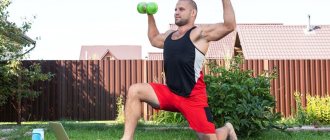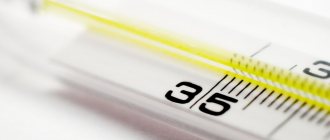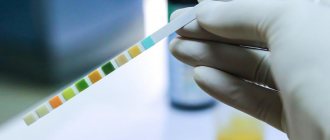general characteristics
By this term, doctors mean numerous nonspecific discomfort sensations in the body that do not have a clear localization.
Often the appearance of body aches occurs without a rise in temperature. Patients describe their condition differently: some say they “twist their joints,” experience pulling or squeezing pain in their muscles, or it feels like their bones and joints are being twisted, flattened, and stretched at the same time. Body aches are accompanied by severe weakness, fatigue, and loss of performance. Unpleasant symptoms persist for several days; constant painful stimuli cause increased nervousness and apathy. If a low-grade fever is observed, body aches are usually combined with chills and muscle tremors. The manifestation rarely occurs in isolation: against the background of discomfort in the joints and bones, a headache, runny nose or cough develops, and other symptoms that depend on the cause of the ailment. When body aches turn into severe diffuse pain without clear localization or the accompanying symptoms worsen, you need to consult a doctor.
Causes of body aches
Causes of muscle aches
There are symptoms of different nature: pulling, “twisting”, squeezing pain, discomfort, tingling and burning in the muscles. Unpleasant sensations occur in all muscle groups, but are most pronounced in the legs. Sometimes the symptoms of body aches are so severe that they interfere with daily activities. Muscle aches are caused by reasons such as:
- Nonspecific myositis
: after hypothermia, heavy physical exertion, with unsuccessful sudden movements of the limbs or torso. - Respiratory diseases
: influenza, ARVI, rhinovirus or adenovirus infections. - Prodromal period of viral infections
: hepatitis, hemorrhagic fevers, chickenpox. - Inflammatory diseases of internal organs
: acute and chronic tonsillitis, pyelonephritis, pneumonia. - Helminthiases
: ascariasis, teniarinchiasis, echinococcosis and alveococcosis. - Fibromyalgia, epidemic myalgia
. - Damage to the musculoskeletal system
: falls from low heights, bruises, plexitis and tendinitis. - Vascular damage to the lower extremities
: varicose veins, thrombophlebitis, atherosclerosis. - Psychoneurological problems
: vegetative-vascular dystonia, prodromal period of migraine, hysterical reactions and neuroses. - Immunodeficiency states
: period of convalescence after serious illnesses, chronic stress, HIV infection. - Poisoning
: drugs, food, industrial poisons and chemicals. - Rare causes:
myoglobinuria, hereditary hemolytic anemia, botulism.
Causes of aching joints
Painful sensations, stiffness of movement, a painful pulling sensation of aching in all joints of the body are observed both without signs of a cold and with respiratory infections. In weather-dependent people, joints “twist” when there is a sudden change in weather, but in most cases the symptom indicates the development of the disease. Common causes of joint pain:
- Physiological factors
: degenerative changes in tissues in old age, prolonged standing, first trimester of pregnancy. - Increased load on joints
: excess weight, curvature of the spine (scoliosis and kyphoscoliosis). - Chronic diseases of the musculoskeletal system
: osteochondrosis and osteoarthritis, ankylosing spondylitis (ankylosing spondylitis), gout. - Collagenoses
: rheumatoid arthritis, systemic lupus erythematosus, scleroderma, periarteritis nodosa. - Infectious processes
: respiratory system (tracheitis, bronchitis, pneumonia), gastrointestinal tract (typhoid fever, salmonellosis, food toxic infection), genitourinary system (acute and chronic pyelonephritis, purulent cystitis, urethritis). - Minor injuries
: sprains and tears of ligaments, bruises of the articular area, damage to the meniscus. - Oncological diseases
: osteosarcoma, leukemia (lymphoblastic, myeloblastic), Hodgkin lymphoma. - Autoimmune processes
: vasculitis, Hashimoto's thyroiditis. - Endocrine pathology
: hyper- and hypothyroidism, diabetes mellitus, Itsenko-Cushing syndrome. - Rare causes
: fasciitis in the recovery stage, carpal tunnel syndrome, hereditary abnormalities in the structure of the skeletal system.
Literature:
- Influenza and acute respiratory viral infections: modern rational etiotropic and pathogenetic therapy. Algorithms for providing medical care to patients: method. recommendations [compiled by: Nikiforov V.V. and etc.]. - M.: Special book - 2018 - 20 pages.
- Handbook of differential diagnosis of internal diseases / G.P. Matveykov, G.A. Vechersky, I.I. Goncharik; edited by G.P. Matveykova. – Mn.: Belarus, 1990., 607 p.
- S. V. Menshikova. Intoxication. Facets of pathogenesis: old and new. Solution option. // S. V. Menshikova, G. G. Ketova, M. A. Popilov, Chief Physician of the South of Russia, No. 2 (54), 2021, pp. 44-47.
- Sologub T.V. etc. Influenza. Clinical symptoms. // Sologub T.V., Ledvanov M.Yu., Maly V.P., Stukova N.Yu., Romantsov M.G., Bizenkova M.N., Polyakova T.D. / Advances in modern natural science No. 12, 2009, pp. 27-29.
- Clinical protocol “ARVI and influenza in adults”, 08/23/2013, 20 pages.
- Karateev A.E. The use of paracetamol in the treatment of acute and chronic pain: comparative effectiveness and safety // “RMZh” No. 25 of November 11, 2010.
- N. A. Shostak. Myalgia in therapeutic practice - approaches to differential diagnosis, treatment // N. A. Shostak, N. G. Pravdyuk, I. V. Novikov, E. S. Trofimov / Medical scientific and practical portal Attending physician No. 4, 2012, 6 pages
- Infectious diseases: a textbook for students of higher education institutions in the specialty “General Medicine” of the subordination profile “General Medical Practice” / V. M. Semenov. – Vitebsk: VSMU, 2021. – 372 p.
- Instructions for use of the drug RINZA® tablets. Registration number: P N015798/01 // /
- Instructions for use of the drug RINZASIP® with vitamin C. Registration number: LS-002579 // /
- Instructions for use of the drug RINZASIP® for children. Registration number: LP-001821 // /
- MP 3.1.0140-18. 3.1. Prevention of infectious diseases. Nonspecific prevention of influenza and other acute respiratory infections. Methodological recommendations (approved by the Chief State Sanitary Doctor of the Russian Federation on December 10, 2018), 50 pages.
- Fedunova T.V. Hygiene for influenza, coronavirus infection and other acute respiratory viral infections. Document registered No. I-02-15/01-00037-02 dated 02/04/2020 (Moscow Department of Rospotrebnadzor), Document registered No. 01-11-7134/20 dated 02/10/2020 (Moscow Department of Health), 19 pages .
- N.I. Briko. Vaccine prevention of influenza: successes and prospects // Safety of medical activities No. 9, 2011, pp. 93-96.
- Paracetamol in the composition reaches its maximum concentration in the blood plasma after at least 10 minutes. Not associated with effect on symptoms. Pharmacology and Pharmacokinetics, edited by Mark Tomlin, page 62, 2010.
- Caffeine accelerates absorption and enhances the analgesic effect of acetaminophen. B. Renner, D. Clark. Journal of Clinical Pharmacology, 04/18/2007.
- Explanatory online dictionary of the Russian language Efremova T. F. / https://lexicography.online/explanatory/efremova/%D0%BB/%D0%BB%D0%BE%D0%BC%D0%BE%D1%82% D0%B0
Diagnostics
A general practitioner will determine the cause of body aches and weakness with or without fever. The condition can be caused by various etiological factors, so the initial examination involves an extensive range of laboratory and instrumental methods. First, the most common causes of the symptom are excluded, and if necessary, an in-depth diagnosis is carried out. The most valuable and informative are:
- Ultrasound scanning
. Complaints of body aches without an increase in temperature are characteristic of traumatic and degenerative processes, which ultrasound of the joints can help eliminate. Arthrosonography is performed to assess cartilage tissue, joint capsule and ligamentous apparatus. If you have heaviness in the legs, it is necessary to do a duplex scan of the veins to identify dilation and blood flow abnormalities. - X-ray examination
. If aches and other symptoms are localized to one part of the body, an x-ray of the affected area is taken to evaluate bone structures, cavities, or pathological formations. To exclude chronic diseases that cause discomfort, X-rays of the lungs and abdominal organs are prescribed. - Modern Imaging Techniques
. Computed tomography is more informative for studying the bony elements of the joint, their relative position and the area of attachment of the ligamentous apparatus. The method allows you to detect osteophytes, salt deposits that cause body aches. MRI is performed for a detailed study of the condition of hyaline cartilage and muscle tissue. - Invasive procedures
. If it is difficult to verify the diagnosis of body aches without fever, diagnostic arthroscopy is used to examine the joint cavity and identify changes in the early stages, when they are not visible on an x-ray. If a tumor of the blood system is suspected, the results of a puncture biopsy of the bone marrow and cytomorphological analysis of biopsy specimens are indicative. - Blood tests
. General and biochemical blood tests are intended to detect markers of an inflammatory or infectious process. If body aches occur without fever, indicators of cartilage tissue degradation (glycosaminoglycans, chondroitin sulfate), the amount of calcium and phosphorus are determined. The level of creatinine determines the condition of muscle tissue. - Specific laboratory methods
. To confirm the infectious cause of fatigue and aches felt in the body, bacteriological examination of sputum, throat swab, feces or other biological materials is indicated. The levels of antibodies to the most common pathogens are studied in the blood using ELISA. PCR is effective for searching for the genetic material of microorganisms.
In patients with aches that are felt in the body, accompanied by weakness and occurring without a rise in temperature, endocrine diseases should be excluded, so the blood is tested for levels of thyroxine, corticosteroids, and ACTH. To diagnose lesions of the peripheral nervous system, electroneurography and electromyography are performed, and a complete neurological examination is indicated. An extended immunogram allows you to exclude severe violations of the body's resistance.
If you have body aches, it is recommended to stay in bed
Treatment
Help before diagnosis
When joint and muscle aches appear, it is advisable to remain in bed or limit physical activity as much as possible. If symptoms are combined with chills, the person needs to be warmed up and given warm drinks regularly. For excruciating pain, you can take an NSAID tablet. Many patients begin to take antiviral or strong analgesics, which cannot be done when they have body aches, since self-administration of such drugs blurs the clinical picture and makes it difficult to diagnose the cause of the disorder.
Conservative therapy
Medical tactics depend on the etiological factor. Mostly, drugs are prescribed that affect the primary disease that caused the body aches, after which the painful sensations disappear after treatment. In case of severe illnesses or contagious infections, the patient is hospitalized in a hospital; in other cases, outpatient treatment is indicated. Most often used for drug therapy:
- Anti-inflammatory drugs
. Drugs from the NSAID group effectively relieve signs of inflammation in myositis and arthritis of various etiologies. They are taken in case of respiratory infections accompanied by fever, since the drugs have a strong antipyretic effect. - Antiviral drugs
. For influenza, it is recommended to take specific medications that affect the formation and assembly of viruses in the body. These drugs speed up the recovery period and prevent the development of serious complications from the central nervous system. For bacterial infections, antibiotics are used. - Chondroprotectors
. For chronic osteoarthritis with body aches, but without fever and hyperemia of the skin over the affected joint, glucosamine and hyaluronic acid are recommended. These drugs help restore the structure of cartilage tissue and slow down degenerative processes. - Glucocorticoids
. Hormones are used in severe stages of joint damage and all rheumatic diseases to relieve inflammation and eliminate stiffness of movement. Sometimes, to increase effectiveness, medications are injected directly into the joint cavity. - Detoxification compounds
. To reduce body aches without fever caused by poisoning, massive parenteral infusion of saline solutions is indicated to accelerate the elimination of toxic substances. If a toxic compound is identified, a specific antidote is administered.
Physiotherapy
To reduce pain, electrophoresis with anti-inflammatory drugs on the area of the affected muscle or joint is effective. Electromagnetic therapy, balneotherapy, and hydrotherapy help reduce the manifestations of synovitis. To eliminate pain after traumatic injuries, bruises, compresses with dimexide and glucocorticoids are prescribed. For aches throughout the body, accompanied by a runny nose and other signs of acute respiratory viral infections, rinsing the nasal passages with sea salt solutions and gargling with antiseptic solutions are recommended.
Surgery
Frequent causes of aches that occur in the body and joints without fever are degenerative changes in cartilage and bone tissue, which require surgical intervention. The modern method is therapeutic arthroscopy, during which osteophytes and pathologically altered areas of the synovial membrane are removed and abrasive chondroplasty is performed. Osteochondral autoplasty, aimed at restoring the anatomical structure of the joint, helps to reliably eliminate pain. In advanced situations, corrective osteotomies and arthrodesis are necessary.
For plexitis and neuritis caused by compression of nerve structures, decompression surgical interventions are indicated. In case of severe varicose veins, staged sclerosis of the damaged vessel or phlebectomy is performed. Treatment of body aches caused by rheumatoid arthritis includes total synovectomy, and in the case of irreversible changes in bone tissue, endoprosthetics becomes the operation of choice. For refractory endocrine diseases, removal of the affected organ is recommended (thyroidectomy, subtotal resection of the thyroid gland, adrenalectomy).
Why does ARVI selectively affect people?
Having been chilled outside, we try to warm up at home with hot tea and take a bath, but, unfortunately, these simple but effective procedures do not help everyone. This fact is explained by the general health of a particular person. Hypothermia of the body only triggers the mechanism of a cold, but the nature of the further development of the disease is determined by other reasons.
- A hypothermic body is easily affected by respiratory viruses, including the influenza virus. Entering into a favorable environment, pathogenic microflora begins to actively multiply.
- Susceptibility to infection is largely determined by the state of the immune system. For example, chronic diseases significantly weaken the body’s ability to fight viruses and bacteria that have entered it.
- Patients with enlarged tonsils or with constantly inflamed sinus mucosa are much more likely to be exposed to ARVI. Hypothermia will cause an exacerbation of chronic diseases in them.
- The state of the gastrointestinal tract also affects the level of immunity. The likelihood of catching a cold increases significantly with dysbiosis caused by taking antibiotics or internal causes.
- It is no secret that the likelihood of contracting ARVI increases when a person is in a stressful situation and experiences strong psycho-emotional stress.
The body's reaction to the active activity of pathogenic microflora will also be different.










